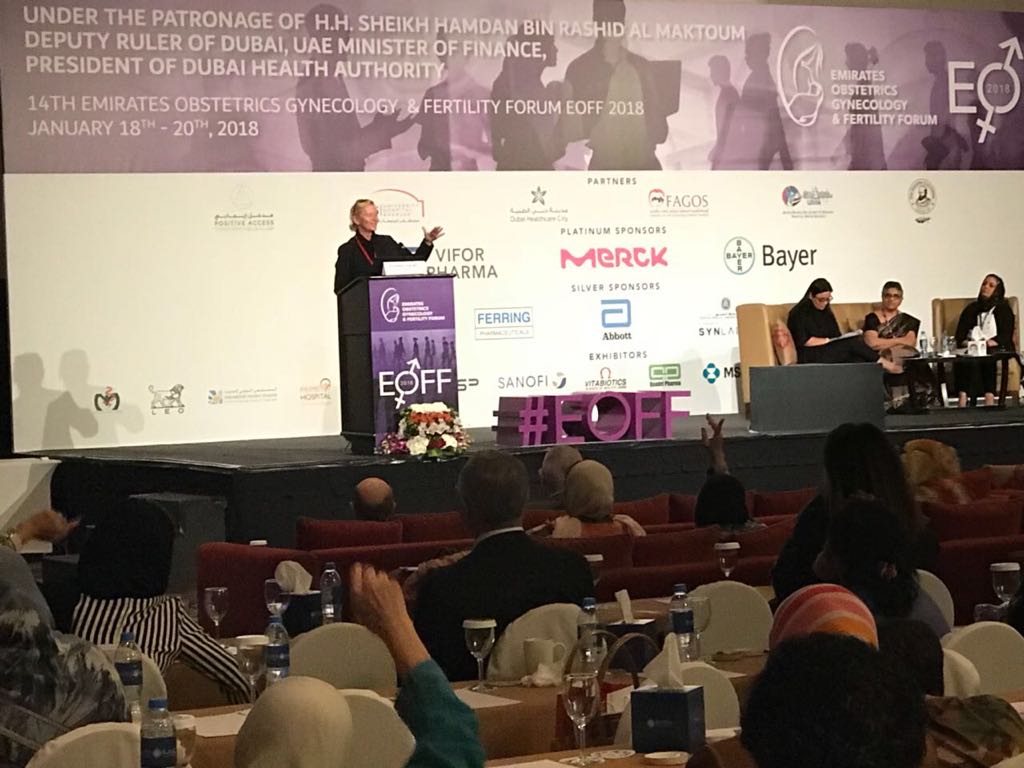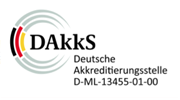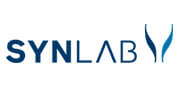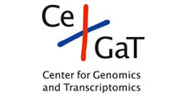LAB HOURS: MON - THU and SAT : 9:00 AM to 9:00 PM
FRI and SUN : 9:00 AM to 6:00 PM

Article - Update on Strategies in Gynecological Cancer Diagnostics
FML at EOFF, 01/2018

Update on Strategies in Gynecological Cancer Diagnostics
PD Dr. med. habil. Michaela Jaksch, Senior Consultant Laboratory Medicine, Medical Director
Freiburg Medical Laboratory ME LLC, Dubai, UAE
A literature scan of the past 25 years of gynecological cancer screening (including breast cancer) shows significant improvement of technical testing possibilities. In this article, I will present the stepwise development of diagnostic strategies with focus on molecular diagnostics.
Prior to the molecular era starting in the 1990s, the screening focused primarily on inspecting, palpating, assessing, educating, ultrasound investigation, mammography (and other imaging methods), pap-smear screening, histological assessment - if necessary, and testing of very few biochemical markers, such as CEA, CA 125 and CA 15-3.
The US declared war on cancer in 1971. One milestone in this war was the earlier introduction of pap-smear screening, broadly used from the 1960s onwards. It has significantly reduced age-adjusted death rates for cancer of the cervix to more than 70%.
In 1993, K. Mullis obtained the Nobel prize for his revolutionary discovery of DNA amplification, the polymerase chain reaction (PCR). In this year, PCR based methods were still in their infancy and not used as commercially available screening tests. However, in the following years, genetic research, sequencing and characterization of disease genes and finally the human genome project (human reference genome completed in 2003) dramatically changed everyday life. The completion of this high-quality reference genome can be considered another milestone for many medical disciplines, including oncology.
The introduction of a commercially available kit for HPV genotyping in 1998, also based on PCR, further contributed to reducing cervical cancer. In this context, liquid based cytology (ThinPrep) was approved by the FDA in 1996, followed by SurePath in 1999. The incidence of cervical cancer in the United States has decreased from 14.8 cases per 100,000 women in 1975 to 6.5 cases per 100,000 women in 2012 (Howlader N et al., 2015). What about the remaining gynecological cancers - vagina, vulva, uterus, ovaries?
Especially for uterus and ovarian cancer, specific and sensitive biochemical markers were extensively researched, however with disappointing outcome. I have earlier reported about available algorithms, such as ROMA, OVA1 etc. As for vaginal and vulva cancer, the golden standard remains the inspection, biopsy and histological assessment.
During the period of the human genome project (1990 – 2003), researchers accumulated more knowledge on cancer. Oncogenes and tumor suppressor genes were identified. This was the time when the genomic era of cancer research started. The possibility to compare cancer with the reference genome resulted in the detection of somatic mutations and germline mutations. In other words, germline mutations predispose for a certain cancer (e.g. BRCA mutation in breast cancer) from birth onwards. Somatic mutations develop in single cells and replicate – this event can happen at any time in life. Somatic BRCA mutations can also develop in single cells later in life. The histopathological investigation of cancer with increasing immune-histochemical differentiation possibilities were – and mainly still are - the gold standards in the diagnosis of cancer. However, we have already reached the era of molecular histopathology which is able to complement the traditional classification system. With the option of a closer insight into the tumor, more efficient and individualized therapies could be offered in the future.
For example, BRCA1 and 2 are well-known tumor suppressor genes. Carriers of a pathogenic germline mutation in BRCA1 or 2 will have an increased risk of developing breast or ovarian cancer. Therapeutic recommendations will be part of a pathogenic result report, e.g. ‘BRCA1 deficient tumor cells are sensitive to DNA damaging drugs like Cisplatin and Carboplatin. These tumors are also sensitive to PARP inhibitors (Leung et al., 2011; Lee et al., 2014)’.
A recent publication from the center for genomics and transcriptomics (CEGAT, Germany) presents such an approach: ‘Ultra-Deep Panel-Based Next Generation Sequencing of Cancer-Relevant Genes as Treatment Decision Support’ (see attachment). They require both tumor material and a blood sample of the patient. The tumor material is cut, stained and reviewed by an experienced histopathologist. After estimating the tumor content, microdissection is performed in order to obtain high tumor cell load for the following DNA extraction. Then, enrichment for >700 cancer relevant genes is performed and sequencing is done with extremely high coverage (up to 2000 x) in order to reach optimal sensitivity. The data are analyzed and interpreted by a team of scientists and MDs. Potential beneficial drugs and contraindications (e.g. prediction of tamoxifen resistance in breast and ovarian cancer) are listed. The publication is available in this magazine.
Another important and promising method to detect cancer is the Liquid Biopsy. The analysis of circulating tumor DNA (ctDNA) or circulating tumor cells (CTCs) in blood has been described in the past 10 years with increasingly promising output. Especially during the process of metastasis, which is the main cause of cancer-related death, liquid biopsies can help in the early detection of tumor cells. Continuous monitoring and better cancer management would be possible. However, due to many uncertainties in this field including standardized procedures, a broad application is still not possible. A significant challenge is to differentiate ctDNA from cell free DNA originating from normal cells. One approach is to concentrate on hotspot mutations or on blocking wildtype alleles.
But how optimistic should we assess future strategies in cancer management? In this context, I would like to recommend 2 essential books: ‘The Emperor of All Maladies’, published in November 2010 by Dr. Siddhartha Mukherjee, an Oncologist from Boston University. This book was awarded with the Pulitzer Prize. A short excerpt of a review in the New York Times by Jonathan Weiner from November 12, 2010:
“The heroes of the last few decades of this epic history are Robert Weinberg, Harold Varmus, Bert Vogelstein and the other extraordinary laboratory scientists who have finally worked out the genetics of cancer, and traced the molecular sequence of jammed accelerators and missing brakes that release those first rebel cells. As James Watson wrote not long ago, “Beating cancer now is a realistic ambition because, at long last, we largely know its true genetic and chemical characteristics.” We may finally be ready for war.
As a clinician, Mukherjee is only guardedly optimistic. One of the constants in oncology, as he says, is “the queasy pivoting between defeatism and hope.” Cancer is and may always be part of the burden we carry with us — the Greek word onkos means “mass” or “burden.” As Mukherjee writes, “Cancer is indeed the load built into our genome, the leaden counterweight to our aspirations for immortality.” But onkos comes from the ancient Indo-European nek, meaning to carry the burden: the spirit “so inextricably human, to outwit, to outlive and survive.”
The second book “Nonsense Preventive Medicine” is by the German Professor Dr. Ingrid Muehlhauser, a Consultant for Internal Medicine and Endocrinology at the University in Hamburg. Until 2017, she was Chairperson of the German Network ‘Evidence Based Medicine’. For over 20 years her research has focused on the nonsense of medical procedures.
In summary, tremendous development has been achieved in the early diagnosis of cervical and breast cancer, especially when including imaging. However, cancers of the uterus and ovaries are still detected too late. New molecular approaches such as liquid biopsies could resolve this problem in the future. However, the critical assessment of current (commercially driven) over-diagnoses and over-therapies should also be part of cancer management. The patient together with highest ethical considerations must be in the center of our medical focus.
Literature:
Howlader N et al., 2015). SEER cancer statistics review 1975-2012, National Cancer Institute, 2015 and US Cancer Statistics, available at CDC).
Leung M et al. (2011) Poly(ADP-ribose) polymerase-1 inhibition: preclinical and clinical development of synthetic lethality. Mol Med 17 (7-8): 854-62
Lee JM et al. (2014) PARP Inhibitors for BRCA1/2 mutation-associated and BRCA-like malignancies. Ann Oncol 25 (1): 32-40
Doecker D et al. (2015) Ultra Deep Panel Based Next Generation Sequencing of Cancer Relevant Genes as Treatment Decision Support. See Attachment to this Article.
For review: Wheeler DA and Wang L (2013) From human genome to cancer genome: The first decade. Genome Res 23: 1054-62

Lab hours
MON - THU and SAT 9:00 AM to 9:00 PM | FRI and SUN : 9:00 AM to 6:00 PM













